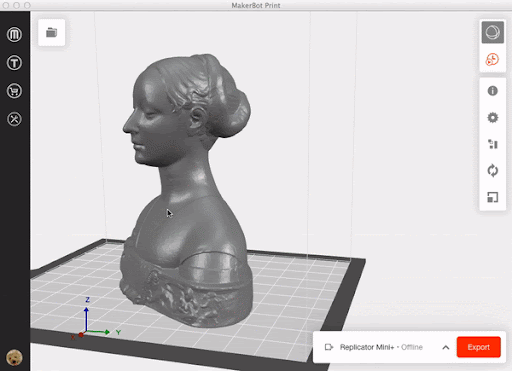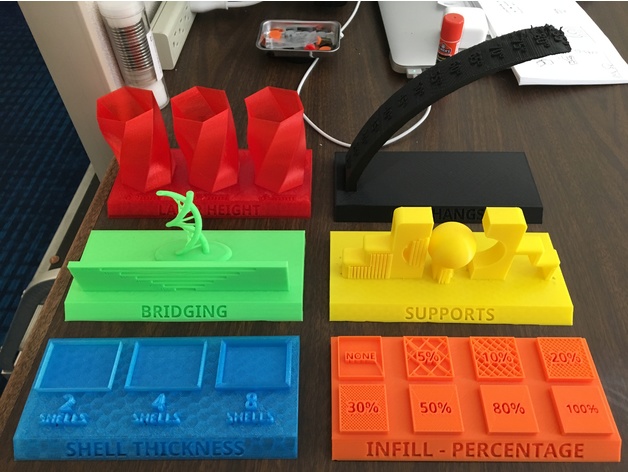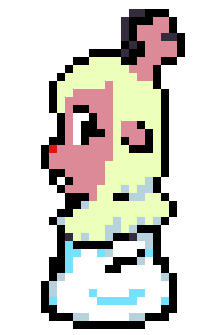What You Need To Know About 3D Printing
What is a 3D print anyway? "It is a 3 dimensional printing process that creates a real object from a 3D digital file. There are several ways to achieve this object, they all rely on the deposition and solidification of material layer by layer." - Cults3d.com
3D printed is what it sounds like - printing, but instead of on a 2D plane (such as a piece of paper) it is printed in three dimensions.
Where can I get things to print?There's actually TONS of resources out there for getting files to print, completely free! Here are some of the websites I know of:
![]() One of the first things most people print when they get a new 3D printer is a calibration cube. This is a simple file consisting of a cube, intended to help you, well, calibrate your machine. Searching for one of these might make for a good first print.
How can I print?
One of the first things most people print when they get a new 3D printer is a calibration cube. This is a simple file consisting of a cube, intended to help you, well, calibrate your machine. Searching for one of these might make for a good first print.
How can I print?
The first step is obviously a 3D printer itself. If you have access to one at your library or school, I'd say your first task should be to find out what kind (make/model/etc) of printer it is, and then search that up online and spend at least a small amount of time reading about the specifications of the device. Maybe browse YouTube for someone's review video and watch that! You may learn interesting tips or features the printer has.
When it comes to suggesting what printer to buy, I don't feel equipped, so I'll direct you to these:
Print settings are going to vary a lot depending on what model you are printing. Read the description on the download page for the free files you pick up, they'll have information on the suggested printing settings. (Especially if you're just a library printer guy)
![]() Infill refers to the actual structure inside a 3D print, and "infill percentage" or similar settings will usually refer to a setting you can change on the printer that changes the thickness/pattern of the filament that's being printed. This changes the density of the finished product. To save time and infill, a fair number of projects out there that you download for free online can be printed at slightly lower infill settings. But, you have to balance giving it enough infill that it can print correctly and stand on its own.
Infill refers to the actual structure inside a 3D print, and "infill percentage" or similar settings will usually refer to a setting you can change on the printer that changes the thickness/pattern of the filament that's being printed. This changes the density of the finished product. To save time and infill, a fair number of projects out there that you download for free online can be printed at slightly lower infill settings. But, you have to balance giving it enough infill that it can print correctly and stand on its own.
Applications of 3d printing, big and small This minisite mostly focuses on things a person can make at home or at their local library, but with a big enough printer that's equipped for the job, 3D printing can be used to make some amazing things. Tons of industrial production is simplified with 3D printing nowadays. Ford, General Electric, Boeing, and Nike are just some of the popular companies that use 3D printing in their factories. Ford uses metal 3D printing to create parts for their cars, for example. Porsche is doing the same with printing extra parts for their retro cars.
A lot of dental care in the US involves 3D printing instead of manual casting to create dental prosthetics, engineers use 3D prints to make prototypes of their designs, and so on. Did you know bio-printing is a thing? This is using 3D printing–like techniques to combine cells, growth factors, and/or biomaterials to create biomedical parts. This is usually with the aim of imitating natural tissue characteristics. We can literally print tissue and organs, and right now these are just used to simulate drug trials and do other tests, but "bio-printing" covers a wide range of stuff. This term also covers things like prosthetics or internal devices that are custom made to a patient's body.
One example of this that I thought was particular interesting is that of an infant with a rare respiratory disease known as tracheobronchomalacia (TBM), who was given a tracheal splint that was created with 3D printing. This condition is super difficult to treat, and it's even scarier on an infant. You can read more about the case here (warning for actual photos of the splint while inserted).
Obviously you're not gonna be running out and making life saving prosthetics with what's gathered here on this page, but I hope I can excite you somewhat for the future of 3D printing. I think we'll see even more exciting advancements in the next few years! Who knows what science will be able to create 20, 10, even just 5 years from now?





